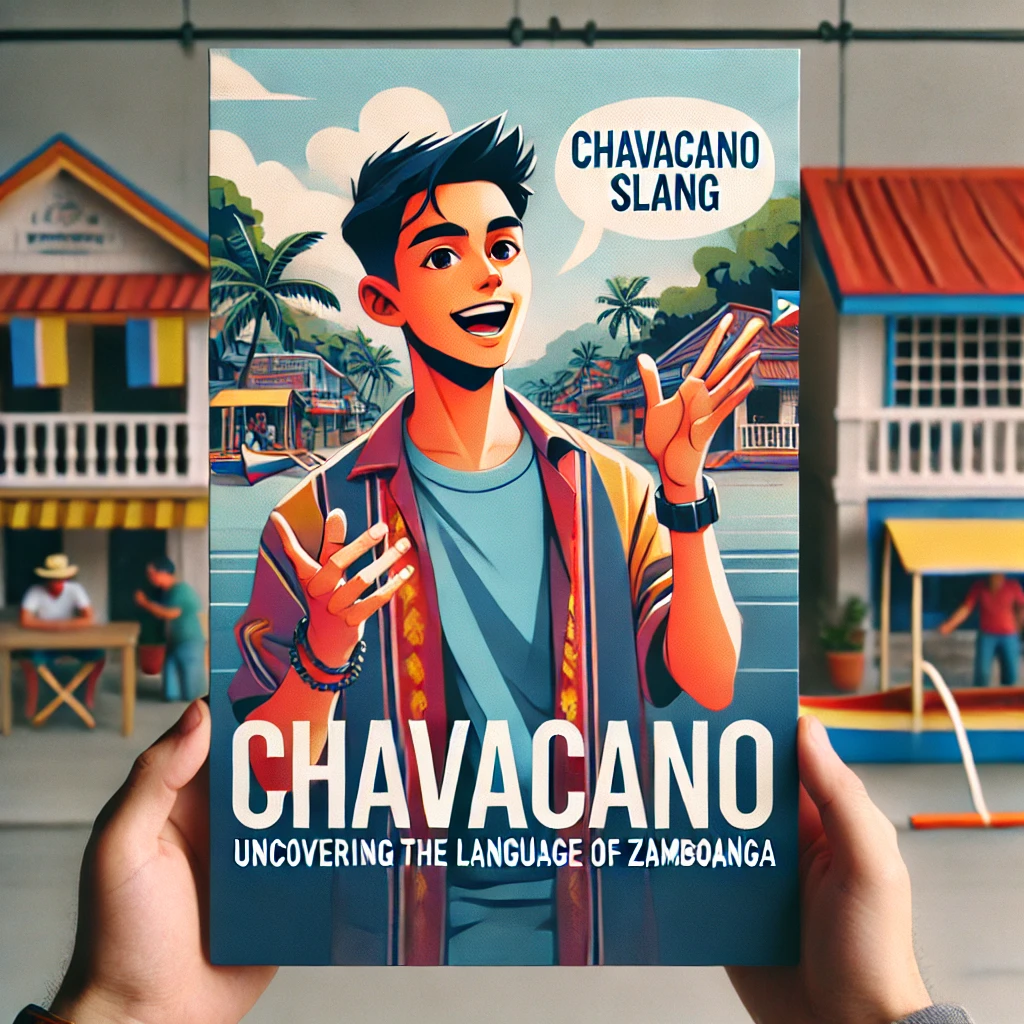Imagine a language that’s like a delicious fruit smoothie, blending the zesty flavors of Spanish, the tropical sweetness of Filipino languages, and a dash of other exotic linguistic ingredients. That’s Chavacano for you, folks! This creole language, born from the steamy romance between Spanish and various local languages, has been spicing up conversations in Zamboanga City and its surroundings for centuries. But today, we’re not just going to sip on the regular Chavacano smoothie. Oh no, we’re diving headfirst into the wild world of Chavacano slang – the extra shot of espresso in this already intoxicating linguistic concoction. So, buckle up, language lovers and curious cats, as we embark on a journey through the streets of Zamboanga, decoding the secret language of its cool kids, sassy grandmas, and everyone in between!
A Brief History: How Chavacano Got Its Groove
Before we start dropping slang bombs left and right, let’s take a quick trip down memory lane. Chavacano didn’t just pop up overnight like a linguistic mushroom. This bad boy has been cooking for centuries, and boy, does it have a story to tell!
The Spanish Fiesta Begins
Picture this: It’s the late 17th century, and the Spanish are living their best colonial lives in the Philippines. They roll into Zamboanga, bringing with them their fancy language and questionable fashion choices. But here’s the kicker – the locals aren’t exactly lining up for Spanish lessons. So, what’s a colonizer to do? Enter Chavacano, the quick and dirty solution to the communication conundrum.
The Melting Pot Starts Bubbling
Chavacano started as a way for the Spanish to chat with the locals without going through the hassle of learning multiple Filipino languages. It’s like linguistic fast food – quick, convenient, and surprisingly satisfying. Over time, this pidgin language evolved into a full-fledged creole, borrowing words and grammar from Spanish, Cebuano, Hiligaynon, and other languages in the area. It’s like that friend who always shows up to the party with a weird but delicious potluck dish – a little bit of everything, and somehow, it just works.
Slang: The Secret Sauce
As Chavacano grew up, it developed its own personality, complete with inside jokes, creative insults, and words that would make your abuela blush. This is where slang comes in, adding that extra oomph to everyday conversations. It’s the linguistic equivalent of adding hot sauce to your already flavorful adobo – unnecessary, perhaps, but oh so satisfying.
Chavacano Slang 101: Speak Like a Zamboangueño Pro
Alright, language ninjas, it’s time to level up your Chavacano game. We’re diving into the nitty-gritty of Zamboanga slang, and trust me, it’s more fun than a barrel of linguistic monkeys. Whether you’re planning a trip to Zamboanga or just want to impress your Filipino friends, these slang terms will have you sounding like a local faster than you can say “Que tal, pañero?”
The Everyday Essentials
Let’s start with some slang that you’ll hear on the regular in Zamboanga. These are the bread and butter of Chavacano cool-speak:
| Slang Term | Meaning | Example |
|---|---|---|
| Pañero/Pañera | Dude/Girl (friendly term) | “Oy pañero, cosa tu ta ase?” (Hey dude, what are you doing?) |
| Polbora | Gunpowder (used to describe someone energetic) | “Que polbora ese bata!” (That kid is so energetic!) |
| Jabon | To scold or lecture | “Na jabon conmigo mi nana.” (My mom lectured me.) |
| Casual | Cool, awesome | “Bien casual el nuevo pelicula!” (The new movie is so cool!) |
Insults and Expressions: Handle with Care!
Now, we’re venturing into spicier territory. Use these with caution, or you might find yourself in hot water faster than you can say “Lo siento!”
| Slang Term | Meaning | Example |
|---|---|---|
| Ñora | An annoying person | “Ay que ñora ese mujer!” (That woman is so annoying!) |
| Safado | Naughty or mischievous | “Bien safado tu, no?” (You’re very naughty, aren’t you?) |
| Lenguaje de calle | Street language (usually vulgar) | “No usa lenguaje de calle na presencia di mayores.” (Don’t use street language in front of elders.) |
The Art of Chavacano Wordplay: Puns and Double Meanings
If you thought puns were the exclusive domain of dad jokes and English majors, think again! Chavacano speakers are masters of wordplay, turning everyday conversations into linguistic acrobatics that would make even the most seasoned punster green with envy. It’s like they’re playing verbal Twister, contorting words and meanings into pretzels of hilarity.
Doble Sentido: The Double Entendre Delight
Chavacano slang loves a good double entendre, or as they say, “doble sentido.” These phrases sound innocent enough on the surface but pack a cheeky punch when you dig a little deeper. It’s like linguistic inception – a meaning within a meaning. Here are a few examples that’ll have you giggling like a schoolkid:
- “Ta pica el pie” – Literally means “The foot is itching,” but it’s used to say someone’s eager to dance or go out.
- “Bien salado” – Literally “very salty,” but it means someone’s unlucky or cursed.
- “Ta ase leña” – Literally “making firewood,” but it’s slang for… well, let’s just say it’s what happens when two people really like each other and there are no parents around.
Using these phrases is like wearing a linguistic disguise. You’re saying one thing, but everyone’s hearing another. It’s the verbal equivalent of a wink and a nudge, and mastering it is key to becoming a true Chavacano slang artiste.
Chavacano Slang in Pop Culture: From Streets to Screens
You might think Chavacano slang is confined to the bustling streets and cozy homes of Zamboanga, but oh honey, you’d be wrong. This spicy linguistic salsa has been shaking its way into Filipino pop culture faster than you can say “Ay, caramba!” From catchy songs to viral memes, Chavacano slang is making its mark and showing the world that it’s more than just a local flavor – it’s a national sensation!
Music: The Rhythm of Slang
Zamboangueño artists have been dropping Chavacano slang bombs in their tracks, creating earworms that stick with you long after the song ends. It’s like they’re musical chefs, cooking up beats seasoned with the finest slang spices. Here are a few tracks that’ll have you bobbing your head and expanding your Chavacano vocabulary:
- “Bien Chavacano” by Maldita – This bop is practically a Chavacano slang dictionary set to music.
- “Zamboanga” by Curse One – Representing Zamboanga through rap, this track is dripping with local slang.
- “Ay Amor” by Divina Gracia – A love song that’ll teach you how to sweet-talk in Chavacano.
Social Media: Slang Goes Viral
In the age of TikTok and Twitter, Chavacano slang has found a new playground. Memes, challenges, and viral videos featuring Zamboangueño expressions are spreading faster than gossip in a small town. It’s like the internet took one look at Chavacano slang and said, “Oh yeah, this is the good stuff.”
Popular hashtags like #ChavacanoCheck and #ZamboangaSlang are trending, with users sharing their favorite local expressions and challenging others to translate or use them correctly. It’s turned social media into a virtual Chavacano classroom, where the teachers are sassy teens and the textbooks are memes.
Learning Chavacano Slang: Tips and Tricks for the Aspiring Zamboangueño
So, you’ve made it this far and you’re thinking, “Hot diggity, I need to get me some of that Chavacano slang action!” Well, my eager beaver, you’re in luck. Learning Chavacano slang is like riding a bicycle – except the bicycle is on fire, and you’re on fire, and everything is on fire because this is Zamboanga and it’s hot as heck. But fear not! With these tips and tricks, you’ll be slinging slang like a pro in no time.
Immersion: Dive in Head First
The best way to learn any language, especially its slang, is to immerse yourself in it. If you can’t hop on a plane to Zamboanga (and let’s face it, most of us can’t just drop everything for a linguistic adventure), here are some ways to bring Zamboanga to you:
- YouTube University: Search for Chavacano vlogs, cooking shows, or music videos. It’s like a window into Zamboanga, minus the humidity and mosquitoes.
- Podcast Mania: Look for Chavacano podcasts. They’re like having a Zamboangueño friend whispering sweet slang into your ear.
- Social Media Stalking: Follow Zamboangueño influencers and celebrities. Their posts are a goldmine of current slang and pop culture references.
Practice Makes Perfect (Or At Least Less Embarrassing)
Learning slang is like learning to dance – you’re going to look silly at first, but with practice, you’ll be the life of the party. Here are some ways to practice your newfound Chavacano slang skills:
- Talk to Yourself: Have conversations with yourself in Chavacano. Yes, you’ll look crazy, but crazy people have more fun anyway.
- Find a Language Exchange Partner: Look for a Zamboangueño who wants to learn your language. It’s like a linguistic barter system – you teach them “dude” and “awesome,” they teach you “pañero” and “casual.”
- Join Online Communities: There are Facebook groups and forums dedicated to Chavacano. Dive in and start chatting. Just remember, the internet is forever, so maybe don’t start with the insults.
The Future of Chavacano Slang: Evolving with the Times
Languages are living, breathing entities, and Chavacano is no exception. Its slang is like a chameleon, constantly changing colors to match its environment. As we hurtle towards the future, Chavacano slang is evolving faster than you can say “Ta cambia el tempo” (Times are changing).
Tech Talk: Slang in the Digital Age
With smartphones becoming as essential as air (okay, maybe not quite, but close), Chavacano slang is getting a digital makeover. New terms are popping up faster than you can update your apps:
- “Ta scroll yo”: I’m scrolling (through social media)
- “Manda DM”: Send a direct message
- “Bien trending ese meme”: That meme is very popular
It’s like the language is getting a software update, adding new features to keep up with the times. Who knows, maybe in a few years we’ll be saying “Ta hologram yo con mi pañero” (I’m hologramming with my friend).
Global Influence: Chavacano Goes International
As the world becomes more connected, Chavacano slang is picking up influences from all over. English, Korean, and even Japanese words are sneaking their way into everyday Zamboangueño conversations. It’s like Chavacano is hosting a linguistic potluck, and everyone’s invited.
For example:
- “Bien K-pop ese baile” (That dance is very K-pop style)
- “Ta binge-watch yo el nueva serie” (I’m binge-watching the new series)
Slang-tastic Adventures in Zamboanga
And there you have it, folks – a whirlwind tour through the wild and wonderful world of Chavacano slang. From its spicy history to its sassy present and its tech-savvy future, Chavacano slang is proof that language is more than just a way to communicate. It’s a living, breathing, evolving entity that reflects the heart and soul of its speakers.
So, the next time you find yourself in Zamboanga, or chatting with a Zamboangueño friend, don’t be afraid to sprinkle a little slang into your conversation. Just remember, with great slang comes great responsibility. Use it wisely, use it well, and for the love of all that is holy, don’t use it in front of your abuela unless you’re prepared for a world-class “jabon.”
Whether you’re a language enthusiast, a traveler with a taste for the unconventional, or just someone who enjoys a good linguistic rollercoaster, Chavacano slang has something for everyone. It’s a reminder that language, at its core, is about connection, creativity, and having a darn good time.
So go forth, my dear readers, and spread the Chavacano slang love. Who knows? Maybe one day, we’ll all be greeting each other with a hearty “Que tal, pañero?” no matter where in the world we are. Until then, keep it casual, stay safado (but not too safado), and remember – in the world of Chavacano slang, life is always bien chavacano!
Disclaimer: This blog post is based on information available up to 2022. Language evolves rapidly, and some slang terms may have changed or fallen out of use since then. While we’ve done our best to provide accurate and up-to-date information, the nature of slang means that usage can vary widely even within Zamboanga. If you notice any inaccuracies or have updates to share, please let us know so we can keep this post as current and correct as possible. Remember, when using slang, context is key, and what’s cool in one situation might be offensive in another. Use your best judgment and when in doubt, ask a local!




